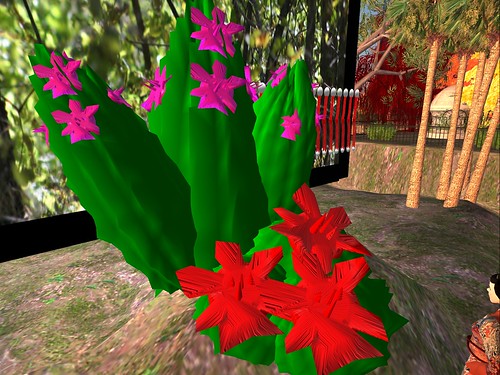When I was in grade school I got into trouble when we had to do one of those infamous class murals. What could possibly have gotten me in trouble? Well my job was paint tree trunks and I painted them as I saw them, not brown but various other shades and encrusted with lichens like this.
Now I wonder what my class mates and teacher would have done if I painted trees looking like this gem?
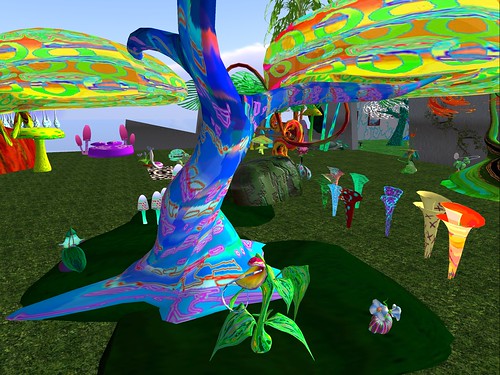 This bit of experimental flora
This bit of experimental flora was created by
Soror Nishi who does some of the most inspired objects I have seen in Second Life.
Soror has a really keen eye and a wonderful organic sense-organic in the meaning related to life.
All around, one sees cellular shapes, tissues, flowers and seeds that pay homage to evolutionary exuberance. I must confess I spent way too much time last night going from one plant to another, and snapping pictures. So here is a sampling from my
Flickr Stream.
This one echoes either a palm or maybe an extreme split leaved philodendron with aerial roots.
 Soror titles
Soror titles this one "Bog Lily" but it is really more like a
Calla lily complete with spathe.

Everything is fantastic maybe the biologist equivalent of magical realism such as these jeweled mushrooms. In some universes they probably would be down right illegal.

These lily pads are clearly inspired by the
real thing.
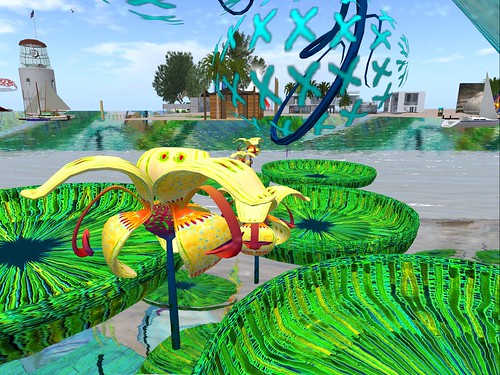
There is attention to botanical detail everywhere. Consider these wonderful hanging legume pods:
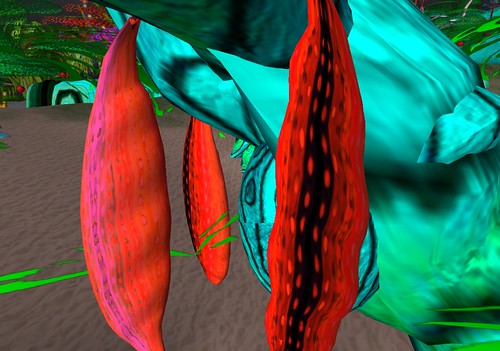 Soror
Soror has a clear grasp of the importance of small things too, that the average visitor to a tropical
rain forest might miss such as these wonderful beach flowers instantly recognisable to me as a morning glory echoing some I have seen in Florida.
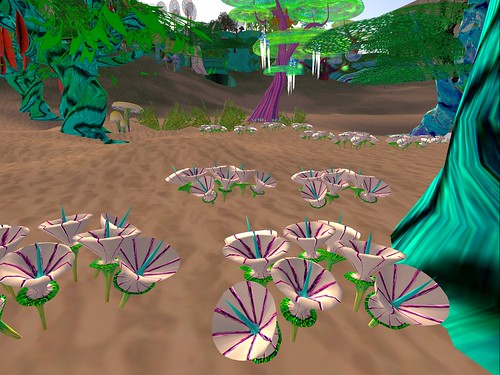
So if you want to visit a great site to see just what you can do with
SL...maybe wow first time visitors, check out
Soror at
http://slurl.com/secondlife/Lifstaen/20/52/228Soror is currently having a show at
LALALALA Gallery at http://slurl.com/secondlife/Avendale/51/76/22
If you send up
teleporting to the
Avendale town square, let everything
rez and click on the Gallery's sign on the sign post for a
teleport.
In the artist information
notecard Soror says:
"The extensive attempts some make to populate this new world with "realistic" copies of the Old World show a colonial tendency to ignore the native culture and superimpose a
pre-formed visual style on this new medium. This medium (
SL) has more in common with stained glass than with photography, and failure to recognise this results in poor copies of boring everyday objects, architecture, flora and fauna."
And I think this is an
interesting point for someone such as myself who tends to import photos for textures.
I see Soror works with Blender...wonder what tips she has for a novice?
Soror's blog is at
http://sorornishi.blogspot.com/.


